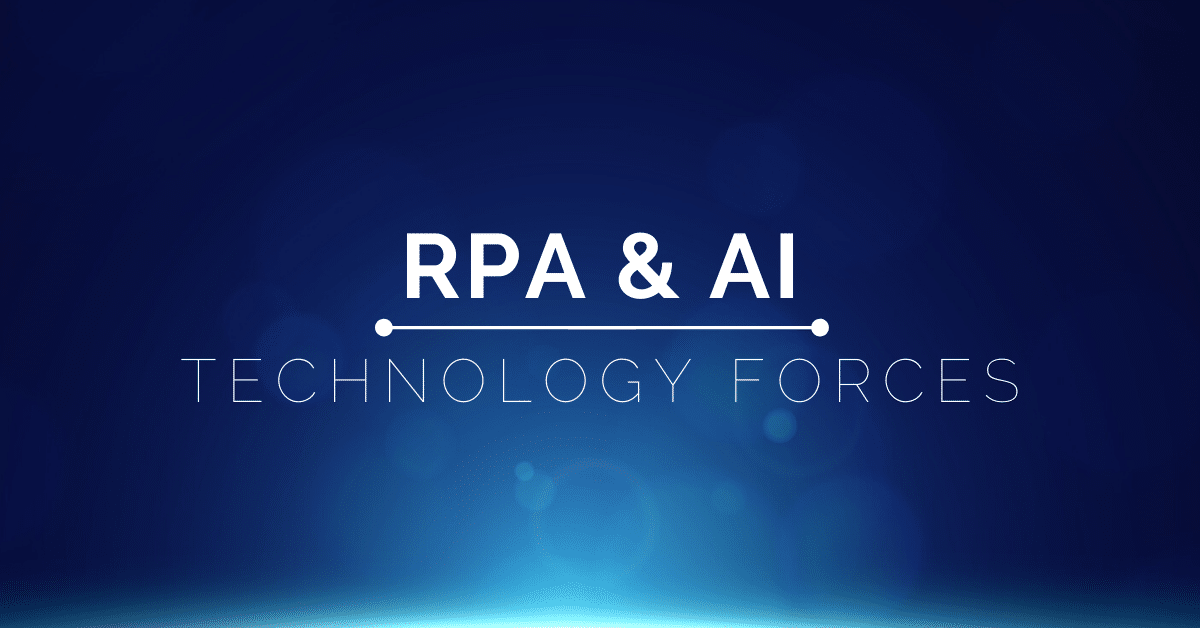Managing technology expenses is hard, so take a minute to think about the complexity that is involved imagining just one billing account, without RPA & AI. We have to effectively manage movements, ads or disconnects so we can have a good record of our assets, services and what charges to expect.
Enterprises may need an on-premises script task for moving and rebalancing mailboxes, updating group memberships permissions, or adding users to certain policies after their objects have been provisioned by the HR system. All this is performed in the cloud through Robotic Process Automation & Artificial Intelligence.
All the excitement surrounding AI and the technologies it supports has created a great deal of confusion about what these terms really mean and how we differentiate them from one another.
One of the many misconceptions is that Artificial Intelligence and Robotic Process Automation are interchangeable. Though both technologies are stirring major enthusiasm around business process automation, they accomplish tasks in different ways.
How RPA works
According to a report by GrandView Research, the RPA market was valued at less than $200 million a few years ago, but it has been growing at a CAGR of 60.5 percent. Similarly, IDC is charting a 35.5 percent increase in RPA spending for claims processing automation within the insurance industry -and other industries- from 2016 to 2021.
Nowadays, many of the biggest companies’ investments and most dramatic projects have involved large organizations, like major insurers, government agencies, etc. But that is starting to change as RPA offerings grow more diverse and sophisticated and as smaller-scale use cases begin to demonstrate their economic value.
Enables organizations to extend business process automation to more people, places, and devices, delivering workflow for everyone in the company by taking full advantage of Asignet’s cloud integration with Office 365. Now you can scale and build advanced workflows on a robust platform.
RPA helps to manage your cloud services. There’s no need to stay useless in your day-to-day because it keeps you productive wherever you are by integrating and connecting to a host of cloud services in real-time. Enterprises can quickly add web services to workflows without writing a single line of code; and publish forms to collaborate with external vendors, partners, and customers.
The integration of enterprise activities with the cloud for Office 365 for all your workflow action needs that help you drive your business. Business users and IT professionals alike will be empowered to quickly and easily automate business processes, from simple reviews and approvals to complex integration across external applications, cloud services, social media and data sources.
Leverage a wealth of actions to support everyday processes across a variety of industrial sectors and company departments, such as provisioning, help desk, leave requests, travel requests, expense claims, maintenance forms and more.
How AI Technology works
The best way to define AI would be to say it is an umbrella term that describes a number of technologies like RPA and a computer’s ability to learn and mimic human thinking like judgment based decisions, reasoning and cognition.
So, let’s break down that definition in two parts; AI technologies and a computer’s ability to mimic human mental capabilities.
AI opens a subset of technology like ML and NLP that we can leverage to our advantage to do more than create rule-based engines to automate repetitive tasks. AI is now opening doors for things like voice and facial recognition, voice assistants, and data analysis. All of which provide excellent data capturing that can be used to trigger a judgment-based response.
Cognitive reasoning engines apply the captured data extracted from learned patterns to make business and operational suggestions. AI’s ability to aggregate, manage, and understand unstructured data is what sets it apart from RPA.
Both are great tools to empower Business Process Automation but together are a workforce to count on. When these two are integrated, the automation process begins so much faster and it’s automation continuum.
Continuum automation will help you obtain an accurate cognitive response transmitting it directly to the RPA system that would then complete the task even faster. In terms of use-cases, this could be as simple as reducing the wait-time on a customer inquiry issued during non-business hours.
We read about RPA years before as something that would develop amazingly in the future, but the future of RPA is here. As companies want to reduce costs and increase productivity, RPA and AI combined is the option for most of them.
Contact us to know more about our solutions.






